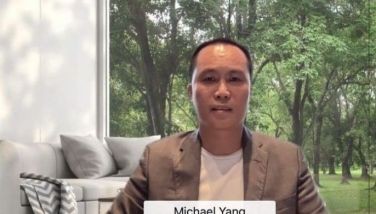New AICO protocol being drawn up

July 28, 2003 | 12:00am
A new protocol covering revisions to the ASEAN Industrial Cooperation (AICO) scheme is being drawn up to allow the extension of the preferential scheme.
According to Board of Investments assistant executive director Elmer Hernandez, a new protocol is needed to replace the original basic AICO scheme which set the referential rates at zero to five percent.
The proposed revisions, Hernandez said, offer a different approach to the AICO scheme.
For one, the preferential tariff would now have to be negotiated bilaterally and, instead of the government initiating the dialogue, it would be the participating companies that must take the lead in "selling" the AICO project to the participating governments.
The AICO scheme was implemented in 1994 prior to the ASEAN Free Trade Area-Common Effective Preferential Tariff (AFTA-CEPT) arrangement which took effect only this year.
The AICO then offered preferential tariff of zero to five percent for ASEAN members undertaking industrial bilateral investments.
However, with the effectivity of the AFTA-CEPT this year, all member countries have brought down their tariffs to zero to five percent, thus removing the preferential nature of the AICO scheme.
Countries which already have existing AICO arrangements, though, still want to extend the AICO scheme.
Initially, the proposal was to bring down the effective preferential tariff to zero.
However, some ASEAN countries have chosen not to completely drop their tariffs to zero as of yet.
These countries include Vietnam and Myanmar which will maintain tariffs at zero to five percent, Thailand with its rates ranging from zero three percent and the Philippines which has rates of zero to one percent.
All the other ASEAN members have brought down their tariffs to zero.
According to Board of Investments assistant executive director Elmer Hernandez, a new protocol is needed to replace the original basic AICO scheme which set the referential rates at zero to five percent.
The proposed revisions, Hernandez said, offer a different approach to the AICO scheme.
For one, the preferential tariff would now have to be negotiated bilaterally and, instead of the government initiating the dialogue, it would be the participating companies that must take the lead in "selling" the AICO project to the participating governments.
The AICO scheme was implemented in 1994 prior to the ASEAN Free Trade Area-Common Effective Preferential Tariff (AFTA-CEPT) arrangement which took effect only this year.
The AICO then offered preferential tariff of zero to five percent for ASEAN members undertaking industrial bilateral investments.
However, with the effectivity of the AFTA-CEPT this year, all member countries have brought down their tariffs to zero to five percent, thus removing the preferential nature of the AICO scheme.
Countries which already have existing AICO arrangements, though, still want to extend the AICO scheme.
Initially, the proposal was to bring down the effective preferential tariff to zero.
However, some ASEAN countries have chosen not to completely drop their tariffs to zero as of yet.
These countries include Vietnam and Myanmar which will maintain tariffs at zero to five percent, Thailand with its rates ranging from zero three percent and the Philippines which has rates of zero to one percent.
All the other ASEAN members have brought down their tariffs to zero.
BrandSpace Articles
<
>
- Latest
- Trending
Trending
Latest
Trending
Latest
Recommended
























